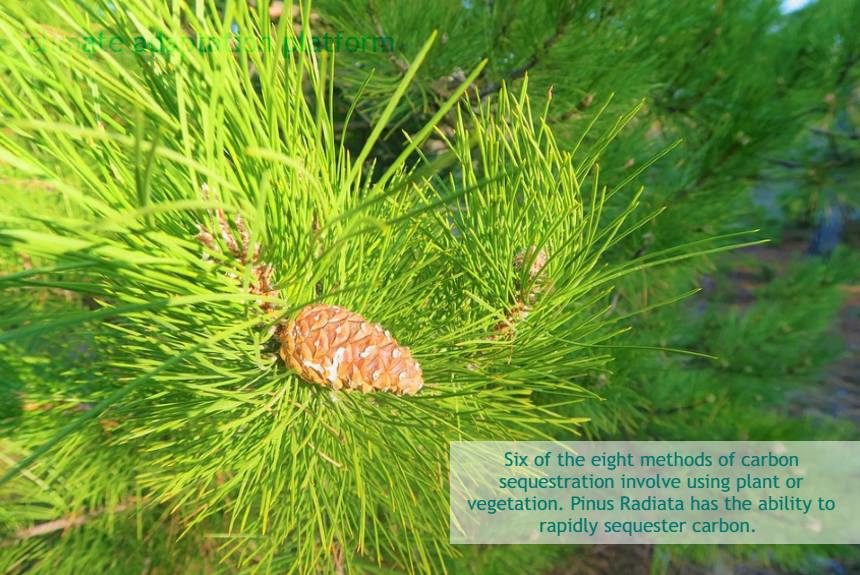There are two ways to deal with carbon emissions. To reduce emissions and capture and store them.
During the UN Convention in Paris on 4 November 2016, known as the Paris Agreement, all countries came together to reduce carbon emissions through their nationally determined contributions (NDCs) (The Paris Agreement, 2019).
Noah Deich, co-founder and executive director of the Center for Carbon Removal in Oakland, California, says, “We can’t just decarbonise our economy, or we won’t meet our carbon goal.” In 2015, human-generated C02 emissions were around 40 gigatons; a gigaton, abbreviated Gt, is a billion metric tons or 0.67 billion tons (Hoff, 2017).
Deich’s statement is obvious and realistic. It’s impossible not to emit carbon, but it is possible to reduce emissions and capture and store them. Emerging carbon capture technologies are ready to use soon. However, there are low-technology and low-regret ones that can be applied immediately.
Pete Smith, chair in plant and soil science at the University of Aberdeen, says in the EcoWatch article that it’s almost impossible to hit 2°C or even less 1.5°C without some negative emissions technology. The report also cites scientists’ creation of a plan to keep warming below 2°C, which strongly depends on reducing carbon emissions and ‘actively’ removing CO2 from the atmosphere (Hoff, 2019).
Hoff (2017) enumerated ways to sequester carbon. Six of the eight methods involve using plants or vegetation to capture and store carbon, and only two do not work in any way: Rock solutions and Direct air capture and Storage
You can read Hoff’s article by clicking on the link below:
Meanwhile, the Newsroom article, “The unpopular tree sucking carbon from our air”, highlighted the ability of a certain pine species, Pinus Radiata, to capture carbon from the atmosphere.
Below are some of the discussions from the Newsroom article that Eloise Gibson wrote:
- Although unpopular in some communities, Radiata can rapidly sequester carbon in the air and grow like ‘weeds.’
- This pine species is a native of Monterey, California, and was brought to New Zealand. These pines are thriving, a phenomenon known as the ‘exotic species effect’, says Euan Mason, a professor at the University of Canterbury’s School of Forestry. It happens when an exotic species is brought into a new habitat minus the endemic pests from the soils it used to live in, Mason adds.
- Although the Pinus Radiata has real potential to absorb and reduce carbon in the atmosphere, looking solely at this plant’s ability to sequester carbon is not the best approach to the problem.
- Pinus Radiata, a much-loved tree by commercial foresters, has become New Zealand’s wood crop after logging destroyed most ancient Kauri forests in the 1880s. Mason says it was pillaging.
- He adds that if New Zealand wants to be greenhouse gas neutral by 2050, one thing holding the country back is if it continues to plant native species.
- It’s not only carbon sequestration that we should focus on, says Pia Pohatu, a researcher from the Waro Project. Pohatu says that the apparent focus on carbon sequestration is simply an excuse for us to continue to emit CO2. Instead, we should also protect the native species and its heritage.
- Gerard Horgan, a trustee of Tāne’s Tree Trust, a non-profit organisation dedicated to fostering indigenous tree species, said that the ‘trust charts’ show that Radiata pine surpasses carbon sequestrations of other native trees like Rimu, Totara, and other native shrubs up to 80 years. Horgan adds that what makes New Zealand New Zealand is that it values its obligation to protect and look after its native flora and fauna. But if the only motivation for planting trees is carbon sequestration, then we’d be planting for fast-growing and medium-rotation age exotics.
- But then there is another option: Radiata Pine and native trees can grow and thrive together. Adam Forbes, researcher and consultant, said that farmers could use Radiata Pine to protect the native forest by acting as a canopy and shelter, allowing native trees to be established.
- Forbes has been studying what would happen if the pine is planted and then left in the ground and eventually replaced naturally by native forest as this could get the maximum carbon benefit from the pine while also allowing the native forest to be established, such as Totara trees.
Tim Payn, a Scion research leader on forest systems, says farmers can forgo timber harvesting in favour of harvesting carbon and enjoying the benefits of trees. He says farmers can get more than just carbon and timber from the forest; they can also get cleaner water, better stream biodiversity, and a potential wildlife corridor (Gibson, 2019).
To know more about the benefits of planting Pinus Radiata and its ability to sequester carbon, click on the button below:
Sources:
The Paris Agreement (2019). United National Climate Change. Retrieved from https://unfccc.int/process-and-meetings/the-paris-agreement/the-paris-agreement
Hoff, M. (2017, July 19). 8 Ways to Sequester Carbon. EcoWatch. Retrieved from https://www.ecowatch.com/carbon-sequestration-2461971411.html
Gibson, E. (2019, September 9). The unpopular tree sucking carbon from our air. Newsroom article. Retrieved from https://www.newsroom.co.nz/2019/09/09/788817/nobody-loves-radiata#



Leave a Reply